Social media advertising is the quickest way to increase brand visbility & generate sales.
Social media advertising has seen a major boom & and a shift due to the COVID-19 pandemic.
With the interest in social media advertising at an all time high, businesses are witnessing a challenge to get the most out of their adverts.
Are you planning to fine-tune your brand's advertising strategy?
Your social media advertising success depends on diverse factors like the quality & placement of your ad creatives.
We've designed a guide to social media advertising encompassing social media advertising stats, benchmarks, costs, to help you optimize your adverts on.
You can scroll through the article or jump to a section of your choice.
- What Is Social Media Advertising?
- Social Media Advertising Cost
- Benefits Of Social Media Advertising
- How To Advertise On Social Media
- Statusbrew For Social Media Advertising
What Is Social Media Advertising?
Social media advertisements are an effective medium to enhance brand identity / awareness and to increase sales.
Traditionally advertising comprises newspaper ads, billboards, fliers, flexes, TV and radio ads. While most of these techniques are still relevant, most of the businesses & brands have shifted online.
The advancement of mobile app development makes people more connected to social platforms.
It opens more opportunities for the business & brands to share highly personalized and relevant content.
However, organic reach on social media is falling each day because more & more content is published than the ad space available on news feeds. Besides to enhance engagement & optimize user experience, social networking platforms provide more tailored content relevant to users' interests.
Through social media advertising, businesses are chasing paid opportunities to expand conversion & enrich brand visibility to more potential customers.
Brand's online advertising requires it to be more diverse & reflective. Stats says 61% of Americans believe diversity in advertising is crucial.
Social ads insights help brands to understand the audience's needs & requirements and have the data about how people engage with the content.
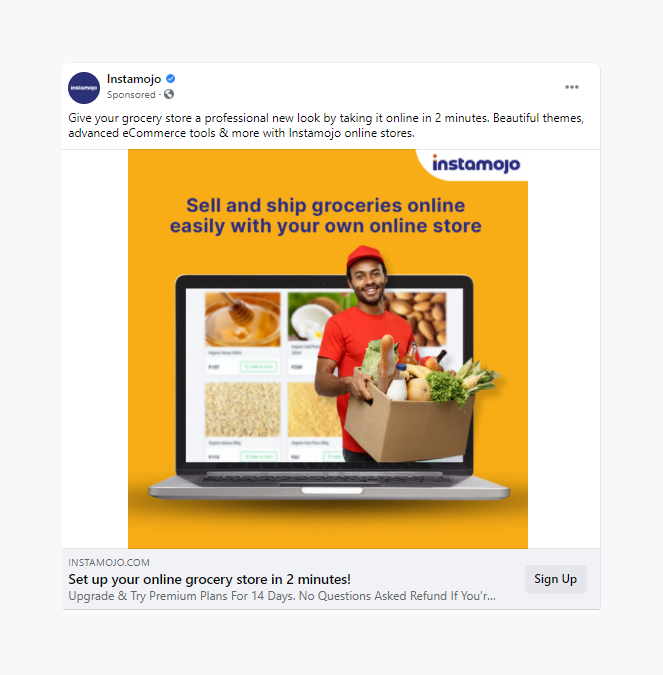
Social Media Advertising Cost
As more and more brands are getting onboard with social media ads, it is vital to understand how much it costs to advertise on social media.
Social media advertising costs depend on factors like CPM, CPC & other bidding models.
We have encased the standard bidding models of social networks, i.e., CPC & CPM & also discussed the average cost of platform-specific bidding strategies like Twitter's CPF or Linkedin's CPO.
Let's check out social advertising cost 2021:
Cost Per Mile (CPM)
CPM is a bidding model that denotes cost per thousand impressions. CPM strategy gives your ad campaign the best result when on a broader advertising campaign, which is primarily focused on creating brand recognition or raising awareness of your product.
-
CPM strategy is a highly targeted model. The formula that is used to measure CPM is advertising cost divided by 1000 impressions.
-
The average cost of CPM is high because of the average price you're paying per 1000 impressions.
-
Facebook's average CPM is $7.19, Instagram CPM is $7.91. YouTube, Linkedin & Twitter CPM is $9.68, $6.59 & $6.46,per 1000 impressions respectively.
Cost Per Click (CPC)
CPC or cost per click is one of the significant standard bidding models. CPC denotes how much you have to pay each time users on social media click on your brand's ad.
Your brand's advertisement CPC is the metric to gauge the performance of the ad campaign & strategy. Usually, brands & small businesses research CPC as the initial steps to understand social media advertising costs.
-
Inflated CPC in ad campings denotes room for improvement in the campaign.
-
By working on your quality score or analyzing your target audience, you can enhance your brand's ad campaign CPC.
-
Depending on social media platforms, CPC differs. Average CPC for Facebook is $0.97, Instagram CPC is $3.56, YouTube, Linkedin & Twitter CPC is $3.21, $5.26 & $0.38 per click respectively.
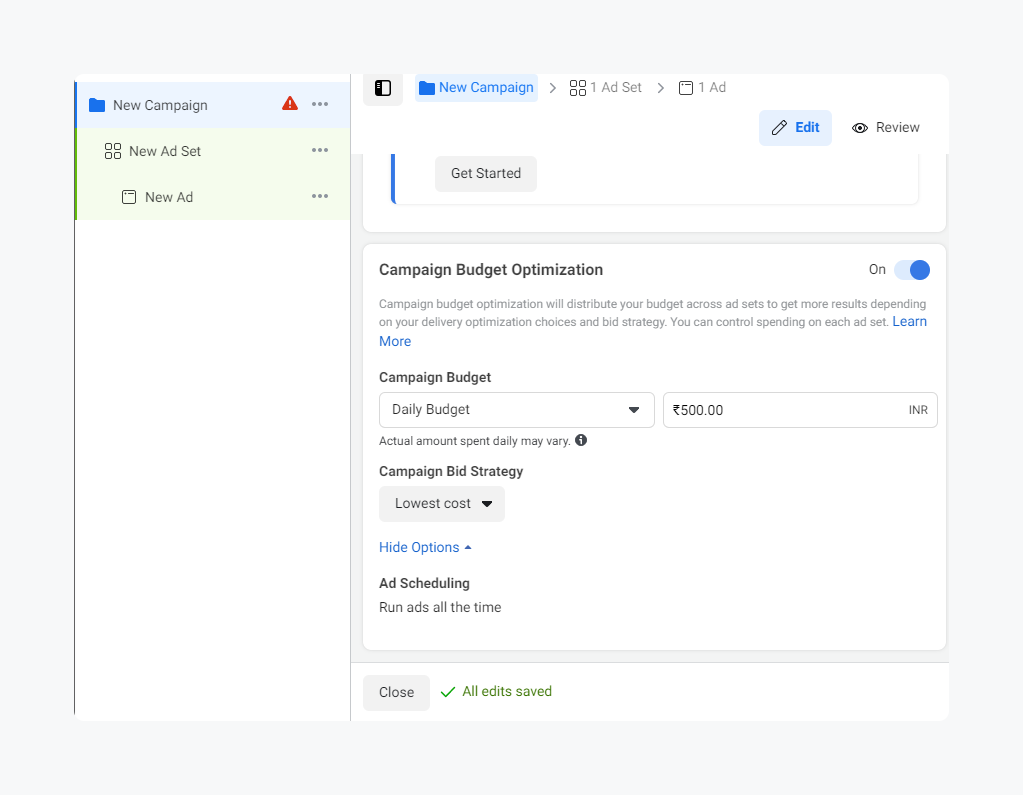
Cost Of Platform Specific Bidding Models
With social media advertising, the cost also depends on your bidding options. It allows biddings like CPL or CPA or CPF etc.
CPL & CPA
Cost per like(CPL) is the amount you pay each time a user likes your post & CPA is the cost you pay when a user completes your desired action, like a purchase through your ad. Average Facebook CPL & CPA is $1.07 & $5.47 respectively.
CPE, CPF & CPD
Twitter has bidding options like CPE, CPF & CPD. CPE or cost per engagement denotes the number of resources to pay when a user interests in your ad.
CPE refers to the cost per follower, which you have to pay if a user follows your account through your ad.
CPD denotes cost per download, the amount you pay when a user downloads something such as an app. For example, the average Twitter CPE is $1.35 per engagement; the average CPE is $2.50 to $4.00 per follower & the average CPD is $1.95 to $3.25 per download.
CPS & CPO
Linkedin has a bidding strategy like CPS & CPO apart from CPC & CPM. CPS refers to the cost per send; each time you send a sponsored ad to your connections, you have to pay any amount.
The average CPS on Linkedin is $0.80 per send. CPO denotes cost per open, the amount you pay when the target audience of your ad campaign opens an email, the average price of this bidding on LinkedIn is $1.70 per open.
CPV
CPV is the bidding model that denotes cost per view. For example, on Youtube, you have to pay when someone from your target audience views your video ad only for 30 seconds or till the end. The average CPV on Youtube is between $0.10 to $0.30 per view.
The social media advertising costs differ depending on the social media platform.
Choose a social media budget for your advertising campaign, analyzing the required minimum advertising budget on different social media. Budgets help brands & businesses to understand the social media ROI of your ad campaign.
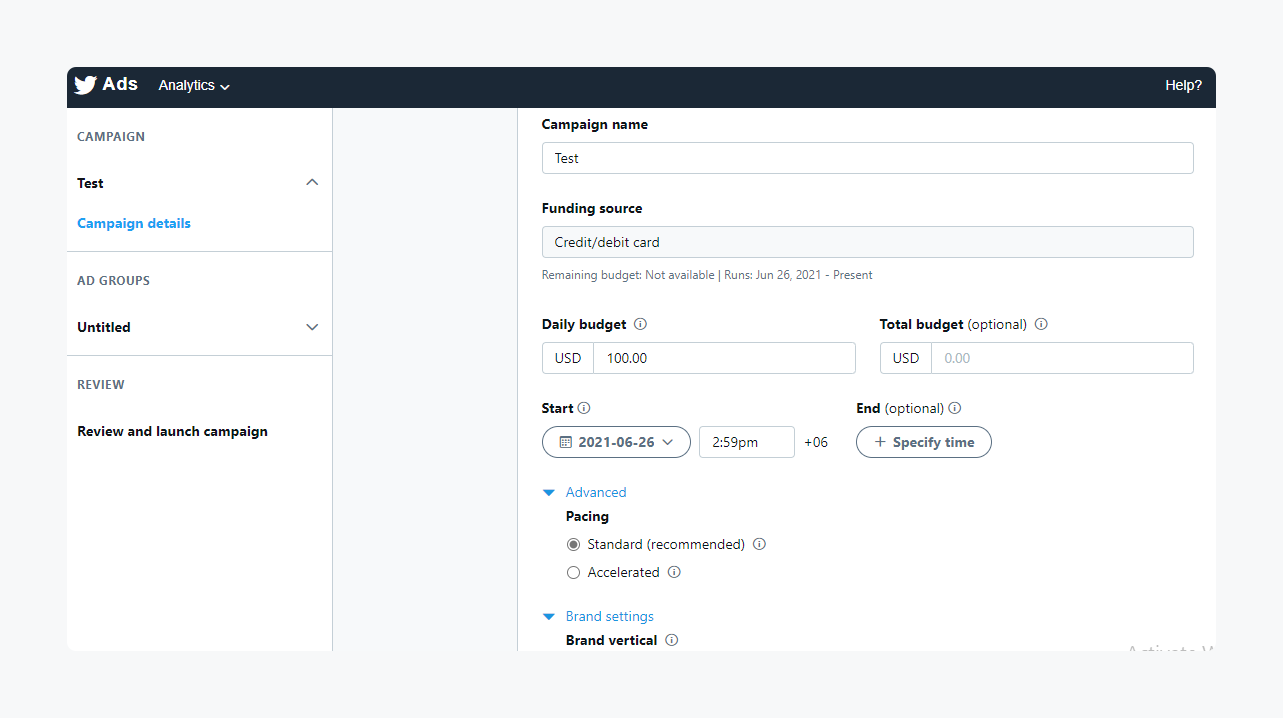
Benefits Of Social Media Advertising
Small businesses & brands are adopting social advertising to enhance brand awards & recognition & to boost sales.
If you are yet skeptical about shifting towards advertising on social network, check out the following points on the benefits of social media advertising:
1. Enhanced Brand Recognition
Brands' social media ad campaigns help to enhance recognition. Social ads allow companies to interact with clients regularly; continuous interaction with the target audience makes a brand credible & helps to build a relationship.
Through ads, your customers become aware & familiar with your products & services, which creates a base of consumers that becomes a referral source to their peer groups.
As a result, your brand's reach increases & social users gradually can recognize your brand. While using social media advertising, make sure that your efforts are subtle enough to make an impact.
Maintain cohesiveness of the brand across all the platforms, stick to a particular theme of colors or fonts as it helps immensely to create brand identity & recognition.
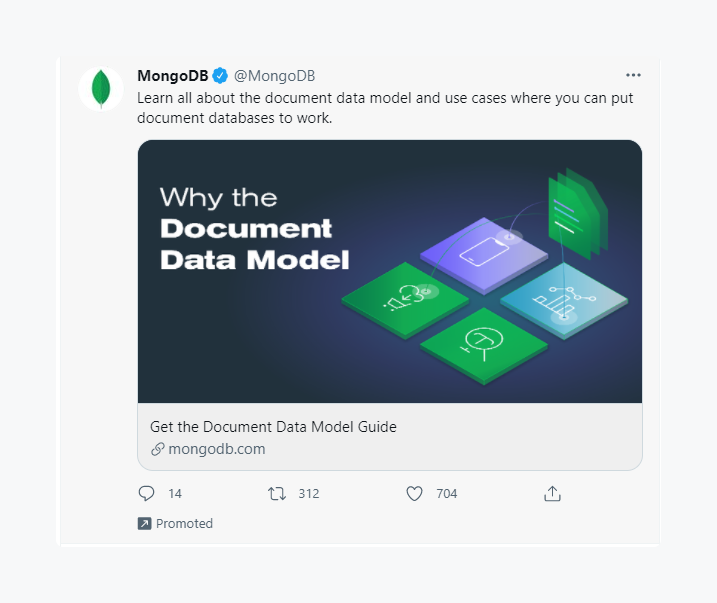
2. Develops Loyal Customer Base
A loyal client is crucial for a brand to afloat growth & sales. New customers are beneficial for a brand's reach, and a loyal customer base is vital for high conversion rates.
Advertising on social media creates an open space for customers to express their views and opinions about a brand's services & products.
When you listen & reciprocate to your consumer opinions, it enriches your customer's satisfaction exponentially and increases customer loyalty to your brand. The consumers get overwhelmed with the brand's direct communication & reply.
Via ads, you become more available to your prospects, the brand becomes reliable to them & and they appreciate the brand more. Your business relation strengthens the bond between clients and establishes new ties within the target market.
3. Enrich Brand Visibility & Conversion Rates
Brand's appropriate utilization of social advertising increases brand awareness & visibility considerably. Enhanced brand visibility via advertising in social media creates leads to your sale website, and the chance of conversion also increases.
Social ads are an effective method of marketing to encourage your target customers to choose the right call to action.
Through CTA's such as sign-up, app installation conversion rate augments. A well-articulated social media advertising strategy improves the brand's sales and profits.
4. Cost-effectiveness
In comparison to traditional advertising, social media ads are cost-effective.
Another benefit of social media advertising is that it is a less resource-intensive method; with a social ad campaign, a brand can minimize its marketing costs by a significant margin.
In addition, using ads to disseminate product information to a target audience group is an efficient way of reducing companies' operational costs.
However, while initiating a social media ad campaign, maintain a consistent theme and a market driven strategy to utilize the platforms fully.
Also, it is crucial to set up an ad budget to monitor social advertising ROI.
5. Highly Targeted Audience
Another benefit of social media advertising is that with social media ads, you can have access to highly targeted audiences.
You can advertise your particular product or service to specific users with preset characteristics, like demography, language, social media behavior, personal interests and hobbies, socioeconomic scenario, etc. Such variables allow your brand to identify your target audience accurately.
Also, through an ad, you can understand your current target audience's needs & requirements.
Advertising on social lets you segment ads & leads you to understand new details about your audience. This is beneficial in planning future ad campaigns for your brand.
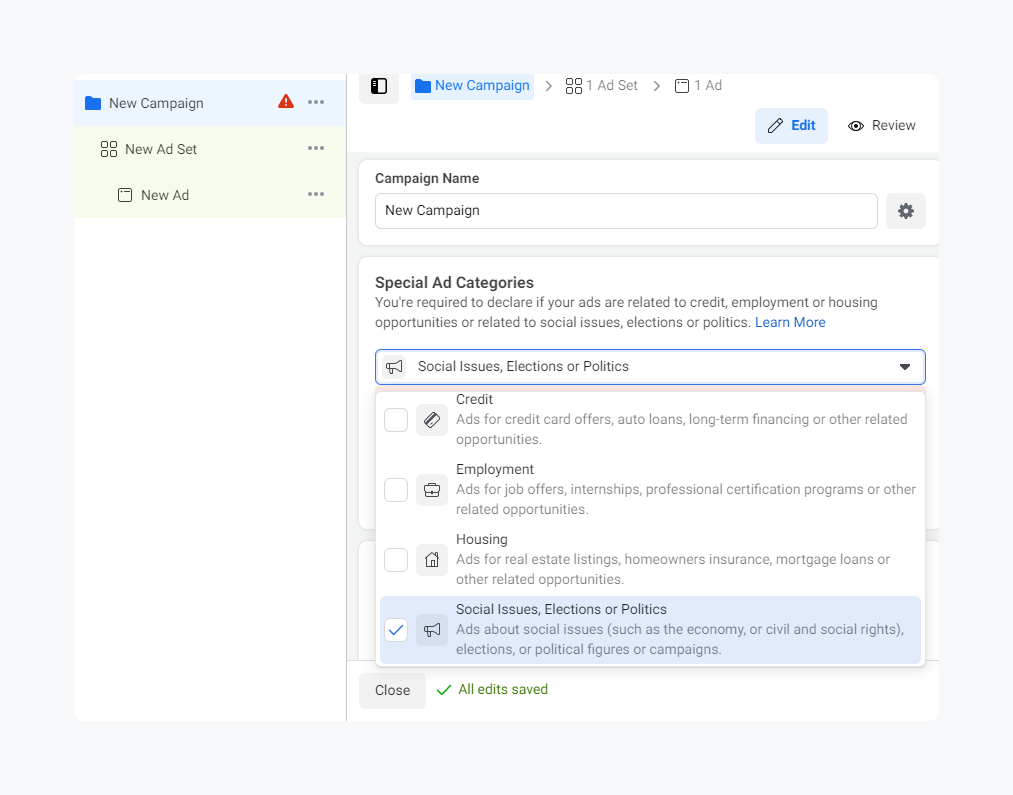
How To Advertise On Social Media
Social advertisements are an excellent way to let people know about a brand's presence in the market. But to maximize your ROI, it's crucial to begin your ad campaign at a social platform that is aligned to your targeted customer base.
We have enlisted prominent social media networks which may be relevant to your business priorities & KPIs.
Top Social Media Platfroms For Advertising
With more than 2.74 billion monthly active users, Facebook is the third most visited website. In addition, the Facebook app is the second most downloaded app & a user spent an average of 34 minutes on Facebook.
93% of social media advertisers are using Facebook ads regularly.
The advertising revenue of Facebook is 2.14 billion & 47% of ad revenue of the social platform arrives from U.S. & Canada. Videos get the highest engagement rates on the social network, while the average engagement rate for posts is 3.6%.
Facebook users are from almost every age; however, the rate of female users is higher than men. 56% of Facebook users are women. Furthermore, 32% of Facebook users are between the age group 12-34 & 77% of users are between the ages group 34-49.
Monthly, an average Facebook user clicks on 12 ads, where women click on 15 ads per month & men's monthly ad click number is 10.
To create an impactful ad campaign on Facebook, brand should craft engaging content; also, to reach your prospect, you can use targeted Facebook advertising.
Instagram is the sixth most visited website & more than 1.2 billion people use Instagram monthly. An Instagram user spent an average of 30 minutes per day on the platform. The engagement rate on Instagram is 10x higher than Facebook & 84x higher than Twitter.
As per data, 11% of U.S. social media users shop on this platform, & more than 200 million users visit a business profile daily. 130 million users tap on shopping post & 81% of users are relying on the platform to search research product & services.
The audience demography of Instagram is young; 67% of users range between the age group 18-29. In addition, females use the platform more than males; the social platform has 51% of females.
An Instagram direct message is also vastly used by users to communicate with business; monthly, more than 150 million users use Instagram direct messaging for direct communication with brands.
To drive more engagement in the platform, your brands should use Instagram reels & stories. Besides, using Instagram posts with carousels can help you to get more organic engagement than regular posts.
In the current era number of monthly active users on Twitter is 353 million & an average user follows a minimum of 5 businesses on the platform. Moreover, 60% users on the platform expect quick customer service, i.e., reply within an hour, from brand & business.
Compared to other social media users, on Twitter users spent 26% more time with ads. According to 40% of users on Twitter, influencers tweet has influenced their immediate purchasing decision.
85% of small and medium businesses on the platform provide customer service & 80% of users have mentioned a brand name in their tweet.
The audience demography of Twitter is 38% of users ranges between 18-29 &
26% aged between 30-49 , where 50% of Twitter users are female 50% are male.
Advertising on Twitter tricky because of the short span, i.e.,3.39 minutes per session. However, with proactive engagement and customer service, brands can use their social media platform effectively. Also, while using Twitter, it is beneficial if you collaborate with an influencer.
LinkedIn is the most trusted social network in U.S & posts on LinkedIn with visual content have a 98% better comment rate. At the same time, Linkedin post with links has a 200% higher engagement rate.
722 million professionals use LinkedIn, and among them, 90 million users are senior-level influencers & 63 million are decision-makers
The yearly income of 49% of LinkedIn users is $75,000 yearly.
605.4 million people can be reached through LinkedIn advertisements & LinkedIn can generate 3 X more conversions than other prominent social networking platforms.
The user demography of LinkdIn: 21% of users are in the range of 18-24 years, 60% are between 25-34 & 17% of people are between the age group 35-54. In addition, the social network has 43% females users and 57% of male users.
Tips To Advertise On Social Media
Follow a few tips and tricks to advertise on social media:
-
Asses Target Audience
Assess the audience you are targeting for your ad campaign; if it is new customers, you want to attract or the old ones you want to reach.
Depending on that, your approach to making the ad would be different. Assessing your target audience ensures to maximize your advertising reach & impression & helps you to get the result.
Develop audience personas to understand your audience requirements & what section of audience your ad campaign should focus on. The art of micro-targeting or segmenting audiences for your ad campaigns is a vital point to enhance your ad campaign success.
If you are a new brand stepping into advertising, you should very well start with the platform that has the most users who look-alike to your target audience. Also, analyze the efficiency & relatability of the platform to increase your brand awareness.
-
Conduct A/B Test To Optimise Ad Performance
Most social media platforms allow their users to post ads with special provisions and tools for business accounts.
However, this doesn't necessarily mean that you should go on posting ads on every available platform. Doing this, you might end up spending way more than you profit from the ad.
Ensure to plan & decide where to post your ads. The tools available in the platforms will help you in determining the same.
For instance, A/B testing allows you to test how a specific audience will welcome a particular form of the ad. This will give you an idea of the feasibility of an ad before you roll it out on a bigger scale.
The A/B tool will further give you an idea of the audience present in a particular social media platform; their likes and dislikes, approach towards brands, and especially towards yours.
In addition, it will tell you the amount of effort you should be putting into a particular platform.
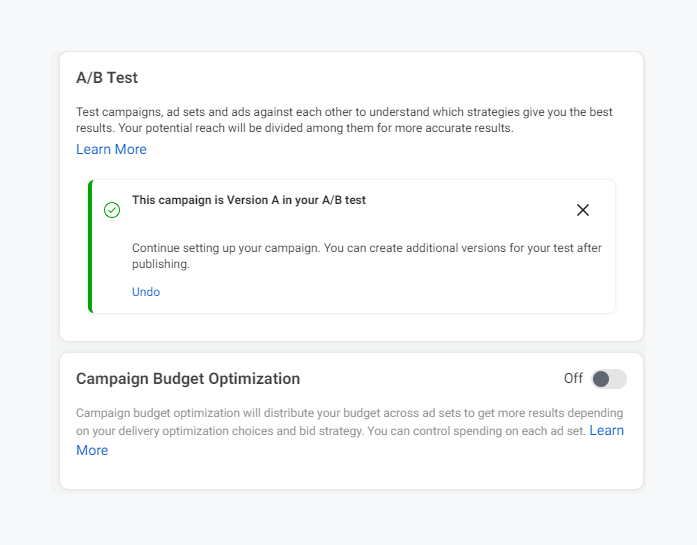
-
Pay According To Campaign Objectives
Before starting the ad social media advertising, understand your business objectives & analyze your ad campaign's aim.
It helps you choose the right social media network & also allows you to decide whether you're looking for audience engagement or impressions.
Both engagement and impressions can scale your business; your responsibility is to select the correct one that is relatable to your business goals. Aligning your goals with an impression or reach ensures that you are paying for the result you want to achieve.
Also, while designing your creatives for ad campaigns, make sure that they are mobile optimized.
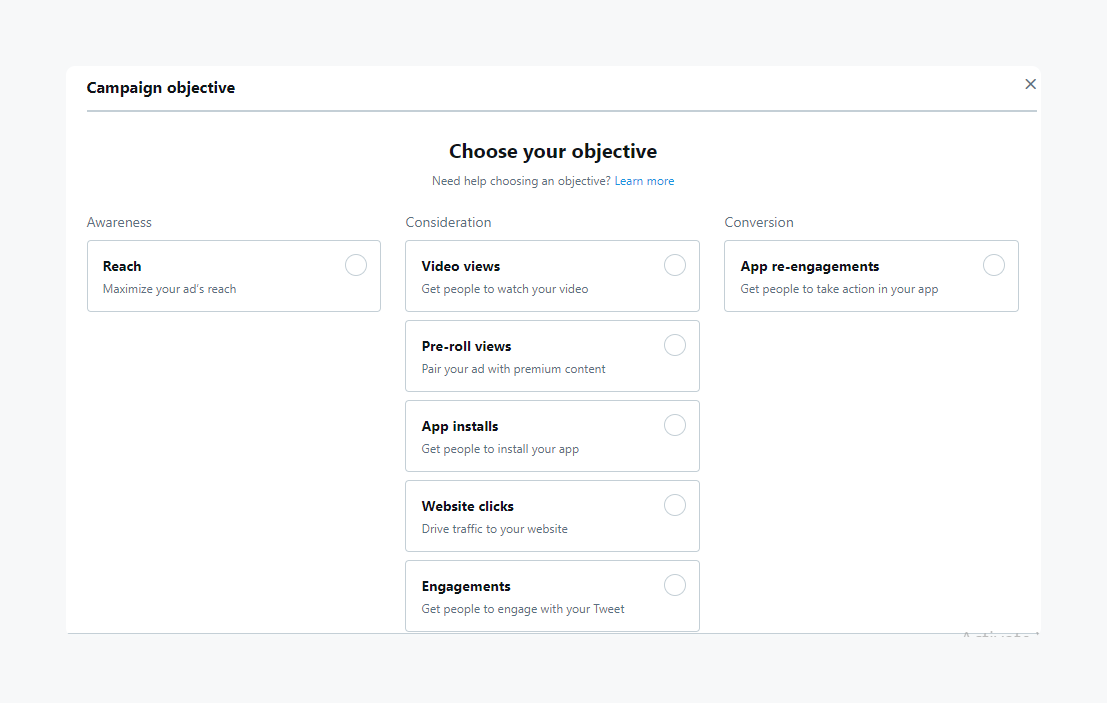
-
Monitor Metrics
Measure metrics to check out if your ad campaign is successfully working towards achieving goals; measuring metrics also give you the idea of where the campaign requires improvement.
Also, getting the reports gives you the concrete value of the company purchases, leads, sales & data on ROI as a whole.
Major networks like Facebook, Twitter, Instagram offer analytics to measure results.
Statusbrew customized reports also give you a wholesome idea & data about how your ad performs on social media. In addition, you can measure all the insights of different social media networks from one unified dashboard.
-
Create Visual Ads
Visual ads have a more significant and more prolonged impact on customers.
A photo or a video always attracts more attention and is well accepted and reacted to by users than other forms of ads.
Carousel ads, a new tool added to some social media platforms, are an excellent way to make a detailed advertisement through images while also advertising multiple products and services in a single ad.
Stories are a new and impressive way of making advertisements. These are short, impressive, and detailed. Moreover, almost all social media users today are seen indulging themselves and checking out stories.
Interactive ads are an excellent way to target a younger audience. These are ads that allow your customers to interact. For example, you can find interactive ads being extensively used by gaming apps, wherein users can play through a level in the ad itself.
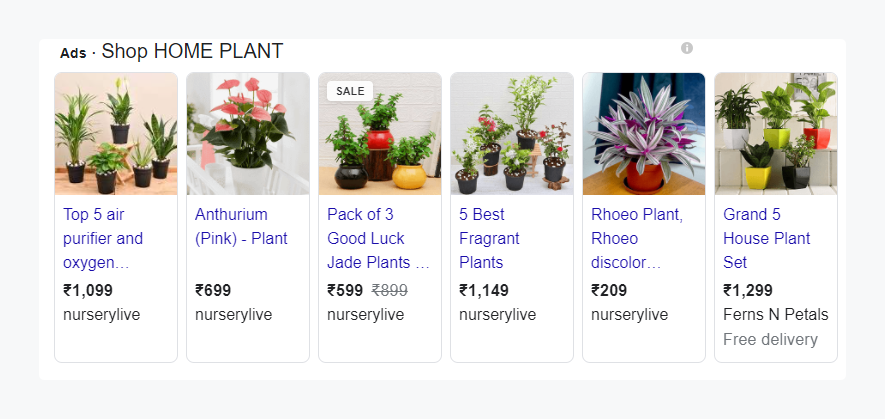
Social Media Tools
Using social media tools for your advertising campaign, you can gain a competitive edge. Tools such as Facebook pixel allows you to track visitor activity on your website.
With this social media advertising tool, you can measure your ads' effectiveness and help you get the insight of custom audiences for dynamic ad campaigns. Also, Pixel allows advertisers to analyze the effectiveness of conversion funnels of your websites.
Facebook Ads Manager is another social media advertising tool which is practical and incredibly useful for business & brands to avail the benefits of social media advertising.
With Ad manager you can track your ad campaign performance or can edit existing ad skills. The social media advertising tool allows you to revise ad budgets and schedules, and you also receive the push notification.
Social Media Advertising Benchmarks
Social media advertising benchmarks define the success of your brand's advertising campaign.
Benchmarkers are the metrics you use to evaluate and understand your current performance & predict future performance and accordingly make necessary improvements.
Check out the top social media benchmarks to measure the success of your brands' ad campaign:
Reach
Reach measures how many people are getting exposed to your content. It is a top-of-funnel metric & you should measure the reach of your campaign because it enhances each indication of increased brand awareness.
When your brand is recognizable and influential, you easily get leads, subscribers, and conversions.
So, while you start your ad campaign, make sure that your ad contents us reaching a substantial audience.
To track reach, monitor your follower growth over different social media platforms or individual post reach & overall campaign reach.
Engagement
Engagement refers to how many social users are interacting with the content on social platforms. For example, users engage with your ads through comments, clicks, shares, likes, and saves.
Social media engagement gives you the idea of your audience's interest in your ad & what content resonates to your target audience.
Significant media platforms show you the engagement rate of each ad. To analyze your ad engagement, you can run and test multiple ads to determine the typical engagement rate for your ad account.
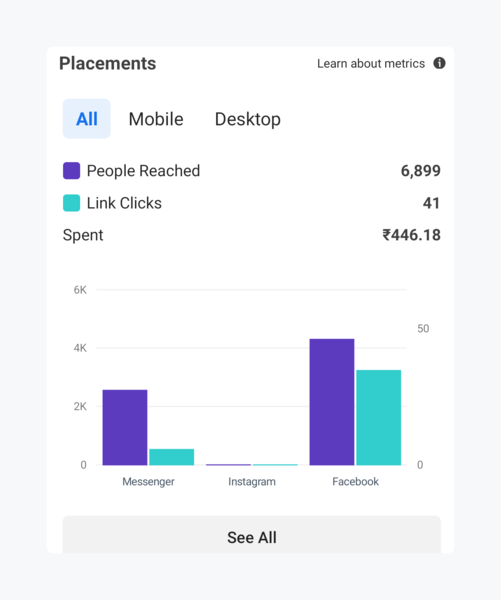
Social Media Referrals
Referral traffic shows the number of visitors you are getting to your website from social media. Social referrals are a significant source to increase website traffic.
To encourage followers to visit your website include CTAs on your ad, referrals help you understand users are resonating with which content & you can leverage that knowledge to enrich your advertising strategy.
Click-Through-Rate
Click-through-rate or CTR tracks the number of clicks an ad or content is receiving. Tracking CTR's shows you how your audience is perceiving your ad & with which content they are resonating.
In addition, CTR affects your ad costs. Ads with high click-through rates on social media get better impressions and better placements, and prices per click are lower.
CTR is measured by the number of clicks divided by the number of impressions multiplied by 100.
Conversion Rate
Conversions on ads may be direct website purchases, subscribing to your newsletter, downloading gated content, or registers for your local event.
Conversions refer to the business goals you want to achieve through your brand's social media advertising.
Your cost per conversion, or cost per action, is the cost you pay for each action of your users on your ad.
In social media advertising, the conversion rate affects your ROI. You can use Facebook Pixel to track conversions on Facebook, and it is also applicable on Instagram.
Statusbrew For Social Media Advertising
With Statusbrew, brands can target audinces ads, boost posts, and manage comments & ad comments across Facebook & Instagram.
-
You can visualize a complete timeline of all your ads and promotional posts.
-
You can hide, delete or disable unwanted comments on ad posts, both regular and dynamic ads.
-
Further, you can moderate Ad comments & Get Insights in-depth insights into the performance report of organic v/s paid impressions, engagement, and much more.
-
To auto-hide negative & spam comments, your brand can create a set of rules.
Boost your advertising ROI with Statusbrew. Book a free demo with Statusbrew or start your free trial.
Statusbrew is a unified tool that supports Facebook, Instagram, Twitter, YouTube, Linkedin, and even Google My Business.!




Explore the Statusbrew range of social media tools
Cancel anytime!